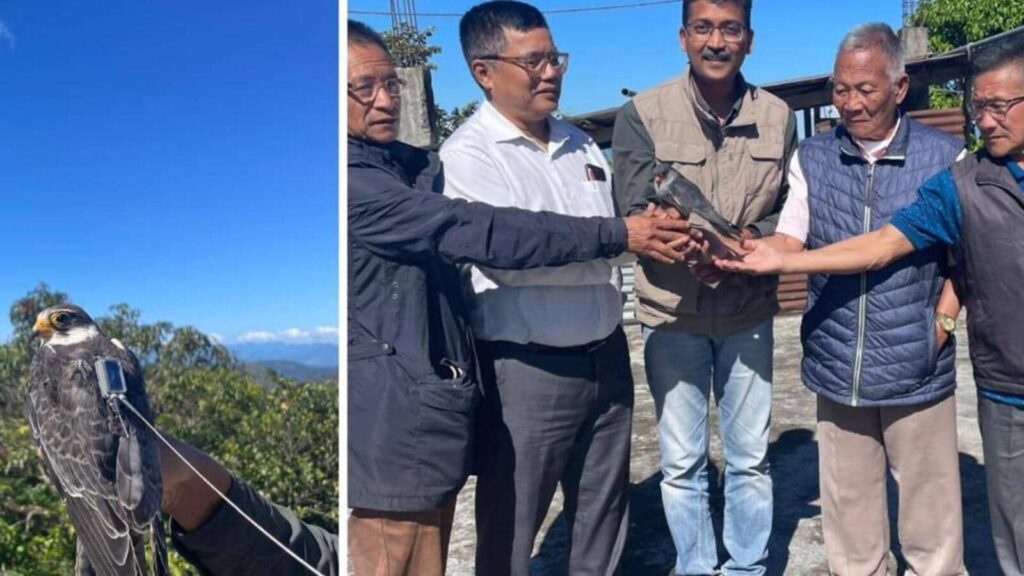Manipur forest dept radio tags two Amur falcons, world’s longest travelling raptors

The Manipur forest department on Friday released two Amur falcons, world’s longest travelling birds, after radio-tagging them with satellite transmitters to study the route of the migratory birds and the environmental patterns along the route, besides taking steps to conserve wildlife in general.

“We’ve released the two Amur falcons from Chiuluan village this morning as part of a continuous conservation initiative,” divisional forest officer(DFO) Kh Hitler Singh of Tamenglong Forest Division said on Friday.
The two Amur falcons were named Chiuluan2 (male bird) and Guangram (female bird) after two key roosting villages in Tamenglong district of Manipur, with the approval of Principal Chief Conservator of Forests and Chief Wildlife Warden Manipur.
“Besides the falcons, we also released nine other Amur falcons ringed with BNHS rings from C58352 to C58362,” the DFO said.
Two of the BNHS-tagged falcons were named Riangsuanei and Laisana,the DFO said, adding that the forest department is planning to radio-tag two more Amur falcons next year. The research programme is backed by the Union environment ministry.
On the importance of the ringed birds, Dehradun-based Wildlife Institute of India scientist Dr Suresh Kumar, who had radio-tagged nine Amur Falcons in the state before Friday, said that the birds were ringed for their individual identification. “These ringed birds have unique numbers, which have other details such as whom to contact, etc.,” he added.
Such radio-tagging programme of Amur falcons was taken up for the first time in November 2018 in Tamenglong, followed by another radio-tagging programme of five birds in 2019.
The Amur falcons, which are protected under the Wildlife Protection Act, 1972, spend their summers at their breeding grounds in southeast Russia and northeast China.
They migrate to their wintering grounds in South Africa, from where they start their return journey in April-May through Afghanistan and East Asia, undertaking a yearly journey of about 20,000km. In between, they stop in India’s northeast, where they have been killed in large numbers in recent years, and Somalia.
In their journey, these raptors, locally known as Akhuaipuina, arrive in large numbers around October in Nagaland and Manipur, and a few other places in northeast India. They leave the region in November after having enough food for their non-stop flight to Africa where they spend their winters.




